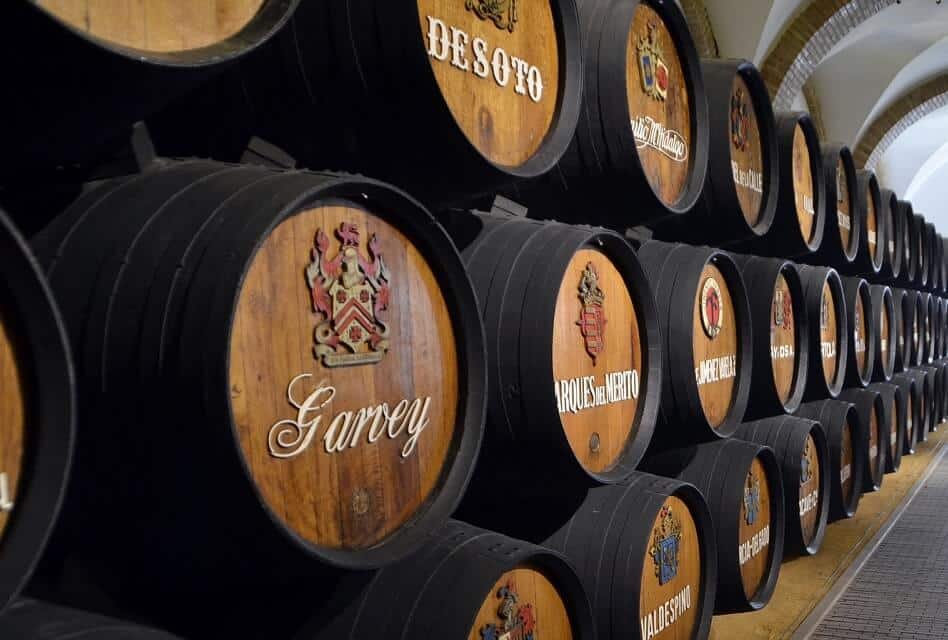Fortified wine is around for hundreds of years. Nevertheless, few wine lovers know much about them, and there are many misconceptions about fortified wines. This article clarifies what fortified wine is, how it’s made, and which types of fortified wines are the most famous.
Fortified wine is a wine that has been enriched with a distilled spirit, for instance, with brandy. As a result of the fortification process, it is significantly stronger in alcohol than regular table wine.
There are many fortified wines that are worth trying. In this article, we will discuss these types:
- Port Wine
- Madeira Wine
- Moscatel de Setúbal
- Marsala Wine
- Commandaria Wine
- Sherry Wine
- Dubonnet Wine
- Lillet Wine
- Vermouth Wine
WHAT IS FORTIFIED WINE?
It is important to understand that fortified wine is not a type of wine but rather a category. And in this category, you can find many different types of fortified wine They can be white, red, or rosé, ranging from bone dry to extremely sweet and featuring all kinds of aromas. So no matter which type of table wine you like, it is highly likely that at least one fortified wine matches your taste:
Is Fortified Wine a Spirit?
Fortified wine is not a spirit. Spirits are made of fermented crops such as grains, potatoes, or fruits. After the fermentation, they undergo a distillation process that extracts water from them. As a result, their alcohol levels rise massively, sometimes to 90% or more.
In contrast, fortified wine doesn’t undergo a distillation process. Instead, the winemaker adds concentrated alcohol, but only in small portions. The outcome is a fortified wine that typically has between 15 to 25% vol.
There are some similarities between spirits and fortified wines, though. For instance, it is common that many fortified wines age in oak barrels for several years. The same is true for many whiskeys, rums, and tequilas. Actually, some whiskeys ripe in barrels that were used for the production of fortified wines before.
Is Fortified Wine the Same as Dessert Wine?
Not every fortified wine is a dessert wine. Most of them are sweet, and those are perfect for dessert. You can even enjoy them instead of a dessert course. However, there is a significant number of fortified wines that are dry. These do not qualify as dessert wines and are more suitable as aperitifs.
Besides, not all dessert wines are fortified. The alcohol in some of the best styles, such as Sauternes or Tokaji, comes solely from fermentation. Winemakers do not add alcohol artificially to them.
HOW FORTIFIED WINE IS MADE
The various types of fortified wines undergo production processes that share some similarities.
For all fortified wines, the first step is the same. Vintners produce a red or white base wine, just like they would make regular table wine: They harvest the grapes, crush them, and ferment them.
But as soon as the wine has the optimal level of sweetness (or dryness), they stop the fermentation by adding a strong spirit. In many cases, they use a neutral-tasting grape spirit such as brandy. It kills the yeast, so the fermentation cannot continue. At the same time, it increases the wine’s alcohol level, which is why this step is called “fortification”.
Depending on the type of wine, vintners may add other ingredients to alter the flavor profile next. Typical examples are herbs and spices, bitter agents, or sweeteners.
After that, most fortified wines spend some time in oak barrels to further develop their aromas. This aging period can range from a few months to multiple decades.
WHAT DOES FORTIFIED WINE TASTE LIKE?
As fortified wines come in many different styles, it is almost impossible to make a general statement about their taste. They all have one characteristic in common, though: They are high in alcohol. Typically, they have at least 15% vol., but up to 22% in some cases.
THE BEST TYPES OF FORTIFIED WINES
Although fortified wines share some production steps and similarities in their characteristics, they can differ significantly. In the following segments, you will meet the best and most famous fortified wines. To learn more about their production, tasting notes, and food pairings, check out the links in the single segments.
Port Wine
Port wines are the most popular fortified wines from Portugal. Their name originates from their hometown: Porto, a harbor city on the Atlantic coast.
Interestingly, the British created the first Port wines. In the 17th century, British merchants started buying Portuguese table wines to fulfill the growing demand in the United Kingdom. These wines were made in Portuguese inland along the river Douro. To bring them to Britain, the merchant had to travel a long distance: from the Douro Valley to Porto’s harbor and then along the coast of Portugal, Spain, and France to England.
During this long journey, the wines often spoiled, especially in summer. To prevent that, the merchants decided to add spirits to the wine to prolong its lifespan. That was how Port wine was invented.
Today, Port wine is a protected wine that is subject to strict regulations. Vintners can make it from various red and white varietals. But after the fermentation, they have to let it age in oak barrels for at least two years. Many producers go way beyond this requirement, though, and let their wines mature for up to 40 years.
Most Port wines are red and deliciously sweet. The younger styles feature aromas of red and black fruit, nuts, and chocolate. Older wines offer notes of dried fruits, caramel, vanilla, and spices. You can also find white variations with flavors of green and tropical fruits and roasted nuts. Dry Port wines exist too, but they are relatively rare.
- type: red, fortified, sweet
- origin: Portugal, Douro
- varietal: Touriga Francesa, Touriga Nacional, Tinta Amarela, Tinta Barroca, Tinta Cão, Tinta Roriz
- alcohol: 20.0%
- type: red, fortified, sweet
- origin: Portugal, Douro
- varietal: Tinta Barroca, Touriga Francesa, Touriga Nacional
- alcohol: 19.0%
- type: white, fortified, sweet
- origin: Portugal, Douro
- varietal: Arinto, Côdega de Larinho, Gouveio, Rabigato, Viosinho
- alcohol: 19.5%
- type: red, fortified, sweet
- origin: Portugal, Douro
- varietal: Sousão, Tinto Cão, Touriga Franca, Touriga Nacional
- alcohol: 20.0%
Taylor Fladgate 40 Year Tawny Port
- type: red, fortified, sweet
- origin: Portugal, Douro
- varietal: Tinta Barroca, Tinta Cão, Tinta Roriz, Touriga Franca, Touriga Nacional
- alcohol: 20.0%
- type: red, fortified, sweet
- origin: Portugal, Douro
- varietal: Tinta Cão, Tinta Roriz, Touriga Franca, Touriga Nacional
- alcohol: 21.0%
- type: red, fortified, sweet
- origin: Portugal, Douro
- varietal: Touriga Francesa, Touriga Nacional, Tinta Amarela, Tinta Barroca, Tinta Cão, Tinta Roriz
- alcohol: 20.0%
- type: red, fortified, sweet
- origin: Portugal, Douro
- varietal: Tinta Barroca, Touriga Francesa, Touriga Nacional
- alcohol: 19.0%
- type: white, fortified, sweet
- origin: Portugal, Douro
- varietal: Arinto, Côdega de Larinho, Gouveio, Rabigato, Viosinho
- alcohol: 19.5%
- type: red, fortified, sweet
- origin: Portugal, Douro
- varietal: Sousão, Tinto Cão, Touriga Franca, Touriga Nacional
- alcohol: 20.0%
Taylor Fladgate 40 Year Tawny Port
- type: red, fortified, sweet
- origin: Portugal, Douro
- varietal: Tinta Barroca, Tinta Cão, Tinta Roriz, Touriga Franca, Touriga Nacional
- alcohol: 20.0%
- type: red, fortified, sweet
- origin: Portugal, Douro
- varietal: Tinta Cão, Tinta Roriz, Touriga Franca, Touriga Nacional
- alcohol: 21.0%
Madeira Wine
Another famous Portuguese fortified wine comes from the island of Madeira. It is located in the Atlantic Ocean, about 580 miles (930 km) west of Morocco.
Curiously, the first fortified wines from Madeira were accidents. In the 15th century, Madeira was an important supply station for ships. When traveling from Europe to the colonies in the Americas, merchants loaded large quantities of table wines there. During their weeks-long journeys, the Caribbean heat often cooked the wine in the barrels. But it did not ruin the wines but improved their flavors instead.
These cooked wines gained popularity not only in the colonies but also in Europe. So winemakers decided to expose their wines to heat during the production process deliberately. They also started to fortify them with brandy to control their sugar content.
Today, modern wineries use heating systems to replicate the cooking process in a less time-consuming way. But others still rely on traditional winemaking techniques. They let their wines age in large outdoor storages where the sun can heat them slowly. While this process requires more time, the resulting wine typically develops more elegant flavors.
Madeira vintners create a wide variety of fortified wines. Depending on the varietals used, they can be very sweet with flavors of chocolate, caramel, and coffee or dry and crisp with herbal and citrus aromas.

Cossart Gordon Rainwater Madeira
- type: red, fortified, medium-dry
- origin: Portugal, Madeira
- varietal: Tinta Negra Mole
- alcohol: 18.0%
Blandy‘s 5 Year Old Malmsey Madeira
- type: white, fortified, sweet
- origin: Portugal, Madeira
- varietal: Malmsey
- alcohol: 19.0%
Blandy’s 5 Year Old Bual Madeira
- type: white, fortified, sweet
- origin: Portugal, Madeira
- varietal: Bual
- alcohol: 19.0%
Blandy’s 15 Year Old Malmsey Madeira
- type: white, fortified, sweet
- origin: Portugal, Madeira
- varietal: Malmsey
- alcohol: 19.0%
Blandy’s Vintage Verdelho Madeira 1976
- type: white, fortified, medium-dry
- origin: Portugal, Madeira
- varietal: Malmsey
- alcohol: 21.0%
Broadbent 10 Year Sercial Madeira
- type: white, fortified, dry
- origin: Portugal, Madeira
- varietal: Sercial
- alcohol: 19.0%
Moscatel de Setúbal
The third type of fortified wine from Portugal is Moscatel de Setúbal (or short: Moscatel). It is not as famous as Port or Madeira, but nevertheless, it is a delicious beverage. Wine lovers enjoy it primarily as a dessert wine, but some also like it as an aperitif.
Moscatel comes from the Península de Setúbal region, just south of the Portuguese capital Lisbon. This region’s soils and climate provide optimal conditions for growing red and white Moscatel grapes (also known as Muscat). These late-ripening, intense-tasting grapes are the main ingredients for Moscatel de Setúbal.
The wine’s production process is remarkable. After the fermentation and fortification with grape spirits, Moscatel wines sit on the lees for at least six months. Next, they spend five years or more in oak barrels to mature further and fully develop their aroma. The result of this process is a deliciously sweet wine with flavors of dried fruits, roasted nuts, fruit marmalades, and Christmas spices.
Marsala Wine
Italy is world-famous for its table wines. But the country of pasta and pizza also has a great fortified wine to offer: Marsala. It comes from a city with the same name on the island of Sicily in the Mediterranean Sea.
Marsala’s history is comparable to the history of Port wine. Originally, it was completely unknown outside of Sicily. It was a wine made for the local market. But in the late 18th century, a British merchant arrived in the port of Marsala after escaping a horrifying storm. To celebrate his survival, he ordered a glass of wine. And he was so delighted by the intense red wine that he bought some barrels and shipped them to England. And this is where the similarity to Port wine happened: To prevent the wine from spoiling, he fortified it with brandy.
The British high society enjoyed the new drink from Sicily very much, so the merchant decided to invest in the island’s wineries. Over the decades, Marsala wine became more and more popular in Europe.
Today, you can find several types of Marsala that range from dry to sweet. Vintners use both red and white grapes to produce them. Besides pure brandy, they also use mixtures of brandy and concentrated sugar for fortification and sweetness control. After the fermentation, all Marsala wines age for at least one and up to ten years in oak.
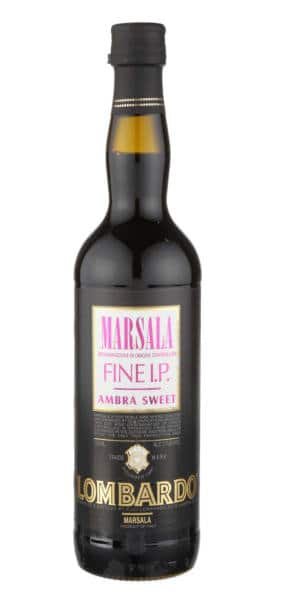
$12.99
from: Wine.com
Commandaria Wine
Commandaria is not as popular as Port or Marsala. Nevertheless, it is an excellent fortified wine with a fascinating history. Its home is Cyprus, a small island nation in the Mediterranean Sea, south of the Turkish shores.
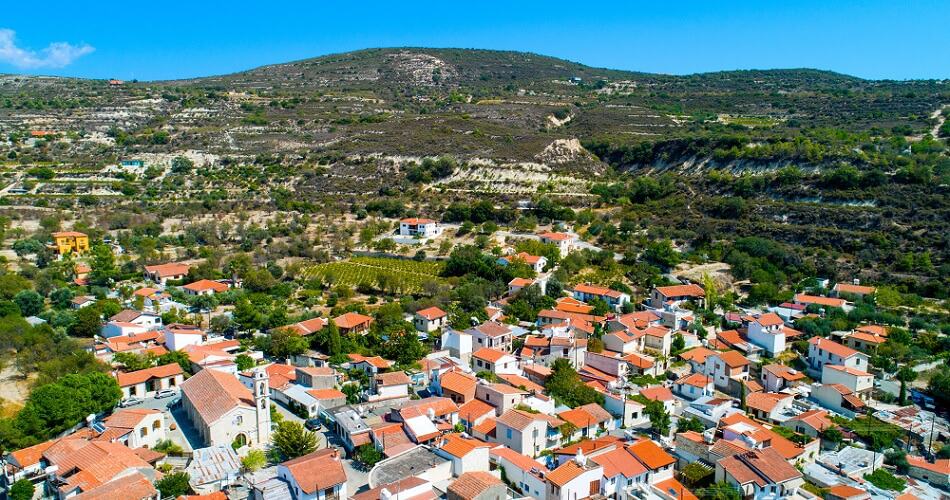
Historians believe that the Greeks knew Commandaria wine as early as 800 BC. They referred to it as “Cypriot Manna”. About 2000 years later, in 1191, the Crusaders conquered Cyprus. They were led by the English King Richard the Lionheart. During the celebrations, Richard tried the local wine. And he liked it so much that he praised it as the “Wine of Kings and King of Wines”. When the Crusaders continued their campaign, Richard sold the island to the templars, who boosted wine production. They started shipping Commandaria to the royal courts of Europe and made it one of the most popular wines of the 16th century.
Over the centuries, Cyprus was hit by many obstacles like invasions that set back its wine businesses. Winemakers never gave up, though. And since the 1960s, they have put enormous efforts into improving production processes as well as marketing.
Today, Commandaria wine still undergoes unique traditional practices. For instance, the grapes dry in the sun for up to three weeks after the harvest. The juice pressed from these dried grapes is incredibly sweet. It undergoes an extensive aging process, during which it gets even more concentrated.
The resulting Commandaria wines are sweet and full-bodied with up to 20% alcohol. They have intense aromas of dried fruits such as apricots or figs, honey, nuts, caramel, and coffee.
Sherry Wine
Spain’s contribution to the world of fortified wine is Sherry. It comes from the so-called “Sherry Triangle” between the cities of Jerez de la Frontera, Sanlúcar de Barrameda, and El Puerto de Santa Maria.
Because of its long and hot summers, this region in Southern Spain has been a winemaking area for about 2200 years. But the production of fortified wines started only in the 17th century. Like the invention of Madeira wine, it was rather a series of accidents than intentional processes that led to Sherry’s upcoming.
The first accident was a series of wars: Napoleon Bonaparte’s campaigns and other conflicts hurt trade within Europe massively. That caused the demand for Spanish table wines to shrink so that Sherry winemakers couldn’t sell their products and had to store them. Over time, these wines slowly oxidized and developed delicious nutty aromas. The introduction of the Solera system also altered their flavors perceivably.
Inspired by the Portuguese and their Port wines, the Spanish started to experiment with fortification. They added spirits to their wines that caused even more oxidation and produced other styles of wine.
Today, you can find various types of Sherry. They can be dry or sweet and range from light and crisp to rich and complex. Many feature aromas of dried fruits, nuts, or spices, but you might also sense herbs, minerals, and earthy notes.
- type: white, fortified, sweet
- origin: Spain, Andalusia
- varietal: Pedro Ximénez
- alcohol: 17.0%
Osborne VORS Venerable 1902 VORS Pedro Ximenez Sherry
- type: white, fortified, sweet
- origin: Spain, Andalusia
- varietal: Pedro Ximénez
- alcohol: 17.0%
- type: white, fortified, sweet
- origin: Spain, Andalusia
- varietal: Pedro Ximénez
- alcohol: 17.0%
Orleans Borbon Manzanilla Sherry
- type: white, fortified, dry
- origin: Spain, Andalusia
- varietal: Palomino
- alcohol: 15.0%
- type: white, fortified, dry
- origin: Spain, Andalusia
- varietal: Palomino
- alcohol: 15.0%
Bodegas Tradicion Amontillado VORS
- type: white, fortified, dry
- origin: Spain, Andalusia
- varietal: Palomino
- alcohol: 19.5%
Dubonnet Wine
Many of the fortified wines we have discussed so far were the results of accidents or attempts to prevent accidental wine spoilage. Dubonnet is different.
This French drink was initially created as a medication against Malaria. In the 19th century, many settlers in French colonies suffered from this potentially lethal disease. And when Joseph Dubonnet introduced the drink named after himself, he wanted to fight this disease.
Thus, he mixed red wine with quinine, a substance known as an antidote to Malaria. Furthermore, he added brandy, cane sugar, and several herbs. This set of ingredients did not only have medical potential. It also created a fascinating flavor profile: The sugar’s sweetness of the sugar, the herbal notes, and the quinine’s bitter aromas made Dubonnet famous as a leisure drink. Late Queen Elizabeth II. of England probably was its most prominent fan. She enjoyed it with a shot of gin before having dinner.
Since the 1970s, the French company Pernod Ricard has been the only European producer of Dubonnet. In addition to the original Dubonnet Rouge, they added a white (Dubonnet Blanc) and a golden variation (Dubonnet Gold) to their portfolio.
Lillet Wine
The second fortified wine from France that you should know is Lillet. Similar to Dubonnet, Lillet was introduced as a medication against Malaria. The Lillet brothers founded the company “Lillet Maison” in the Bordeaux region in 1872 to produce the drink.
Unlike Joseph Dubonnet, they used white grapes to make the base wine for their drink. They fortified it with citrus liqueurs and added several herbs and spices. Because of Bordeaux’s reputation as one of the world’s greatest wine regions and the brothers’ marketing efforts, their drink quickly became famous worldwide. Bartenders in the United States composed many cocktails featuring Lillet, and one of them even made it into a James Bond movie.
In the 1960s, Maison Lillet introduced a red variation called Lillet Rouge. And for the purpose of distinguishability, they renamed their original product to Lillet Blanc. About 50 years later, in 2011, they added a pink style: Lillet Rosé.
Lillet Blanc has not changed significantly since its introduction. During its aging process, it develops sweet aromas of honey, candied oranges, and other exotic fruits. Together with the bitter notes from quinine, it’s a fresh, well-balanced drink.
Lillet Rouge is a bit bolder with flavors of red fruit, oranges, and spices. Lillet Rosé stands somewhere in the middle between the red and the white variation. It features citrus and berry flavors with a subtle acidity.

$19.99
from: Wine.com
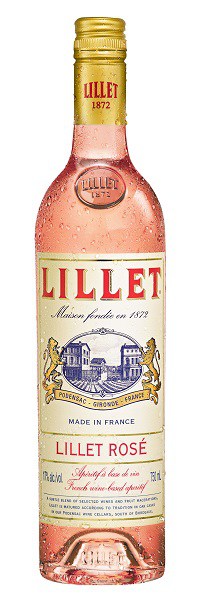
$20.99
from: Wine.com
Vermouth Wine
Another fortified wine that started as a medication is Vermouth. The drink’s name derives from the German word “Wermut” (English: wormwood), which is the name of the herb responsible for the drink’s medical effects. Unlike Dubonnet and Lillet, Vermouth had not only a single purpose, though. Instead, people used it to cure numerous medical problems, including stomach pain, jaundice, and tetanus.
Vermouth’s roots go back to the 16th century when an alchemist developed it in the kingdom of Savoy. About 200 years later, Vermouth became well-known as an aperitif. Especially the French and Italians liked to enjoy it before dinner. By that time, Vermouth was red and sweet. But in the following decades, more and more variations made their way to the store shelves. Among them were sweet and dry white styles as well as rosés.
As cocktails became more and more popular by the end of the 19th century, Vermouth made its way to the United States and the United Kingdom. In these countries, it was (and is) primarily used as an ingredient in the Hemingway Martini, the Manhattan, or other Vermouth cocktails. In contrast, wine lovers in France and Italy still prefer to drink it pure.
Vermouth is made from white wine fortified with a neutral grape spirit. Besides, the drink contains bitter agents like wormwood or quinine, peels of citrus fruits, and numerous herbs and spices. Red wine might play a role as well, but primarily as a coloring agent. When creating sweet Vermouth, winemakers also add sugar syrup.
Gonzalez Byass La Copa Vermouth
- type: red, fortified, sweet
- origin: Spain, Andalusia
- alcohol: 15.5%
Gonzalez Byass La Copa Vermouth Extra Seco
- type: white, fortified, dry
- origin: Spain, Andalusia
- alcohol: 17.0%
- type: white, fortified, sweet
- origin: Italy, Piedmont
- alcohol: 18.0%
- type: red, fortified, sweet
- origin: Italy, Piedmont
- alcohol: 16.5%
Carpano Antica Formula Sweet Vermouth
- type: white, fortified, sweet
- origin: Italy, Lombardy
- alcohol: 16.5%
- type: white, fortified, dry
- origin: Italy, Lombardy
- alcohol: 14.9%
HOW TO STORE FORTIFIED WINE
As a general rule, you should treat fortified wine just like any regular table wine. Store it in a cool and dark place, for instance, in your basement. Shield it from sunlight and sudden temperature changes, and also protect it from strong smells. Especially chemicals like cleaning agents, heating oil, or wall paint can impart their odors on wines when stored next to them for a long time.
Bottles sealed with a cork should lie on their sides, particularly when you plan to store them for multiple years. In this position, the wine is in contact with the cork and prevents it from drying out and breaking. If your fortified wine has another type of stopper, you can also store it standing upright.
Can Fortified Wine Go Bad?
In theory, fortified wine can go bad. But due to its high level of alcohol, it has a much longer lifespan than table wines. It is also more resilient against unfavorable conditions.
Most fortified wines keep for years and even decades as long as they are sealed. Especially those that underwent a long period of aging before bottling, they keep almost indefinitely.
How Long Does Fortified Wine Last When Open?
As soon as you open a bottle, the wine will start oxidizing. At some point, this process will ruin the wine. However, unlike table wines, fortified wines will stay fresh longer than just a couple of days. You can enjoy them for at least two weeks. Some of them, like Commandaria, keep for up to half a year, even when stored at room temperature.
Nevertheless, it is better to put fortified wines into the fridge after opening them. Also, you should reseal them either with the original cork or a plastic stopper.
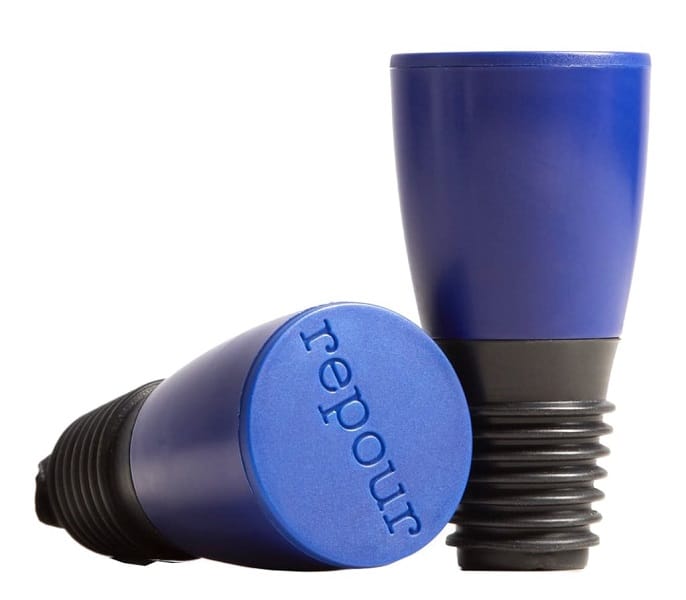
$19.99
from: Wine.com
HOW TO SERVE FORTIFIED WINE
Depending on the style, fortified wine can make an excellent aperitif, a delicious dessert wine, or in some cases, even go very well with the main course. Most wine lovers enjoy dry types before dinner and sweet variations with the last course.
What Is the Right Glass for Fortified Wine?
Fortified wines are much stronger than table wines. Thus, they usually come in small glasses. For many styles, such as Sherry or Port, you can find special glasses designed to highlight their specific characteristics. In general, you are on the safe side when choosing a dessert wine glass. In case you do not own one, pick a white wine glass. Make sure not to overfill it, though.
Should You Decant Fortified Wine?
Most fortified wines do not need to be decanted before serving. Especially those that spent many years aging in oak barrels and had plenty of contact with oxygen. Thus, they exhausted their potential and will not get perceivably better during decanting.
There are some exceptions, though. Madeira, for instance, needs some oxygen to release its full aroma. Also, very old Port wines can benefit from decanting because they might have developed “bottle sickness”. This condition mutes the wines’’’ delicate aromas. Allowing them to breathe for 12 to 24 hours cures this condition so that you can enjoy the wine to the fullest. Besides, decanting might be necessary to get sediments out of old bottles.
To be sure, check out the article for the wine you plan to drink. They are linked above in the example sections and contain details about the perfect glass, serving temperature, and decanting time for each wine.
FINAL WORDS
The world of fortified wine is so versatile that it offers something for every taste. No matter if you prefer dry or sweet, light or bold wines, there is probably a fortified wine for you. So give it a try and find out which one is your favorite.
Recent Posts
Switzerland is famous not only for its beautiful landscapes and its picturesque towns but also for some food items. Especially Swiss cheese and chocolate are world-famous. But do you actually know a...
Winemaking is a sophisticated process that includes multiple steps and can take several years. Depending on the desired wine and the vintner's preferred techniques, these steps can differ. However,...

